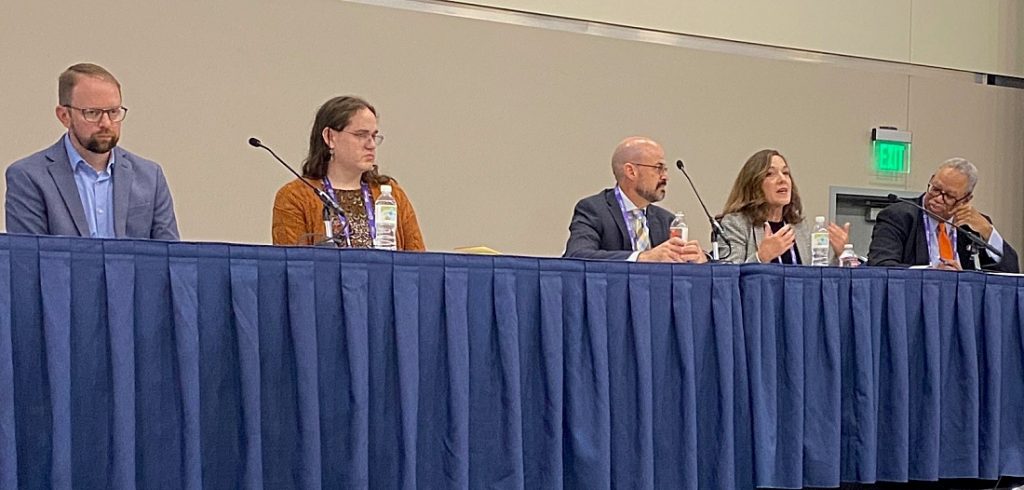Creative Joint Procurement Projects Are Delivering Buses, Keeping Costs from Surging
10/9/2024

Moving to zero-emission fleets—the challenge set for U.S. public transit agencies for the next five years—will be expensive and difficult. Agencies are being supported in that work, though, said Dorval R. Carter, Jr., president, Chicago Transit Authority and chair of the APTA Bus Task Force, at the Buying Cheaper Buses: Use of Joint & Group Procurements session at APTA’s 2024 TRANSform conference in Anaheim, CA.
FTA recently awarded nearly $1.5 billion in grants for no/low-emission bus purchases, Carter noted, and agencies are finding success in joint procurement projects. However, he said, “Electric buses today cost over $1 million each. For all the funding FTA is making available to us, the high price of these buses is limiting our ability to fully transition to zero emissions.”
Erin Rogers, CEO/GM of OmniTrans, San Bernardino, CA, said that her agency saved an estimated six months of work by purchasing buses through her state’s schedule. The most significant benefit, she explained, was “having that streamlined procurement process where you don’t have to spend … time developing the IFB, doing the solicitation, evaluating the proposals.”
OmniTrans did not abandon customizations, either. While FTA prefers standardized builds, some customizations, such as for desert operating conditions, are essential, Rogers said.
Washington State restructured a purchasing contract to create an FTA-compliant cooperative program, currently serving some 200 buyers in 35 states. Alec La Brayere, representing the Washington Department of Enterprise Services, which manages the program, said his agency gathered input from state transit agencies to create its standardized bus specifications and is focused on keeping the contracts in compliance with FTA funding requirements. Registered agencies order through an online portal and can request direct support with the process.
Mike Hynes, national transit bus program manager at the transportation nonprofit CALSTART, described the standardized bus specification his agency is developing through an FTA grant. Working with California transit agencies and using guidance from the APTA White Book, Hynes said the goal is to “build out the specification that shows agencies: Here is a standard bus, … it’s going to meet your needs. It’s going to be safe,” and cost effective, allowing only those minimal non-safety-related customizations or those that do not directly benefit the public.
Bruce Robinson, FTA acting associate administrator for program management, said that standardized builds help address the top two concerns for manufacturers and buyers: cost, and delivery timelines. FTA added a priority consideration to the 2024 no/low bus procurement grant cycle, for reduced customizations, Robinson said, and for 2025, may add more language concerning performance-based specifications, giving manufacturers more flexibility in meeting demand.